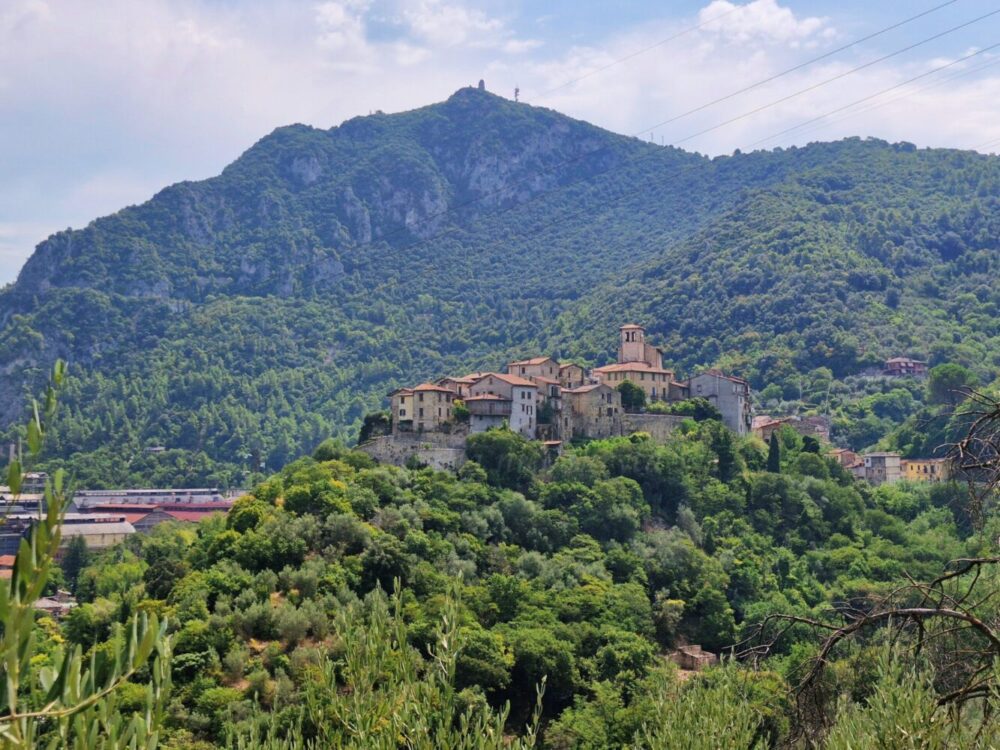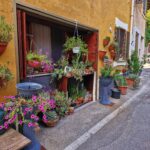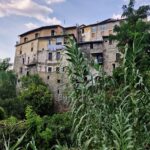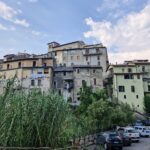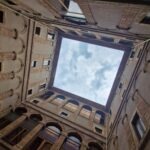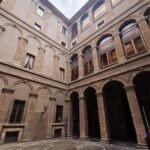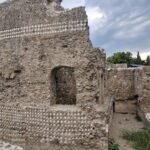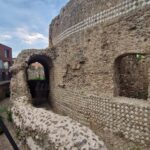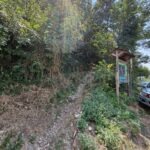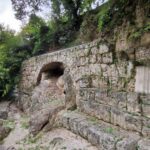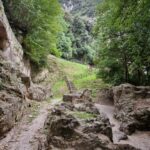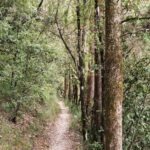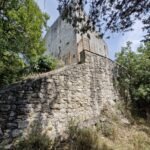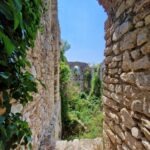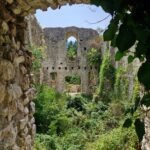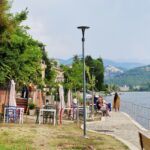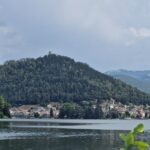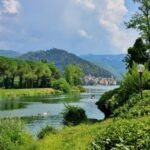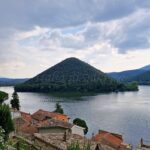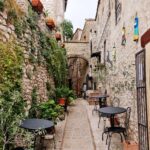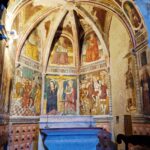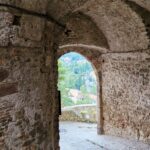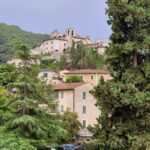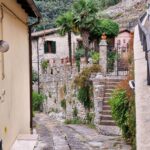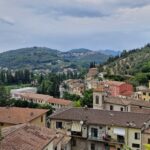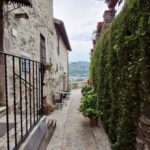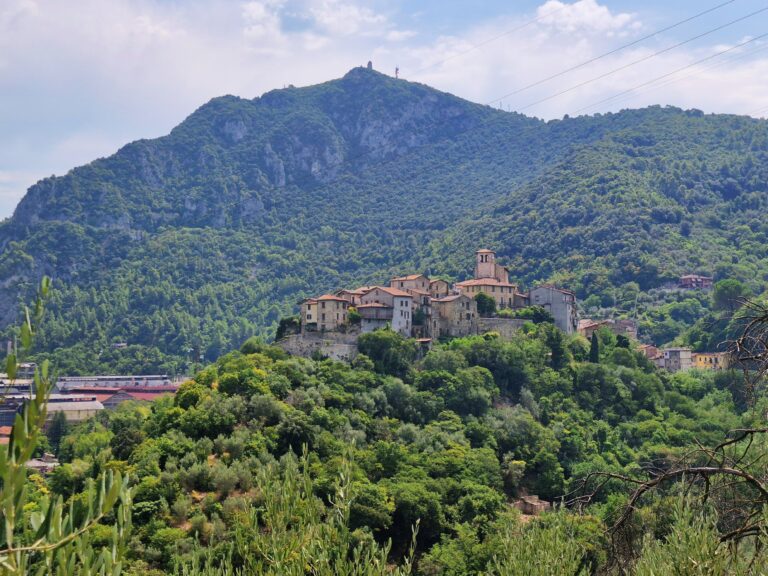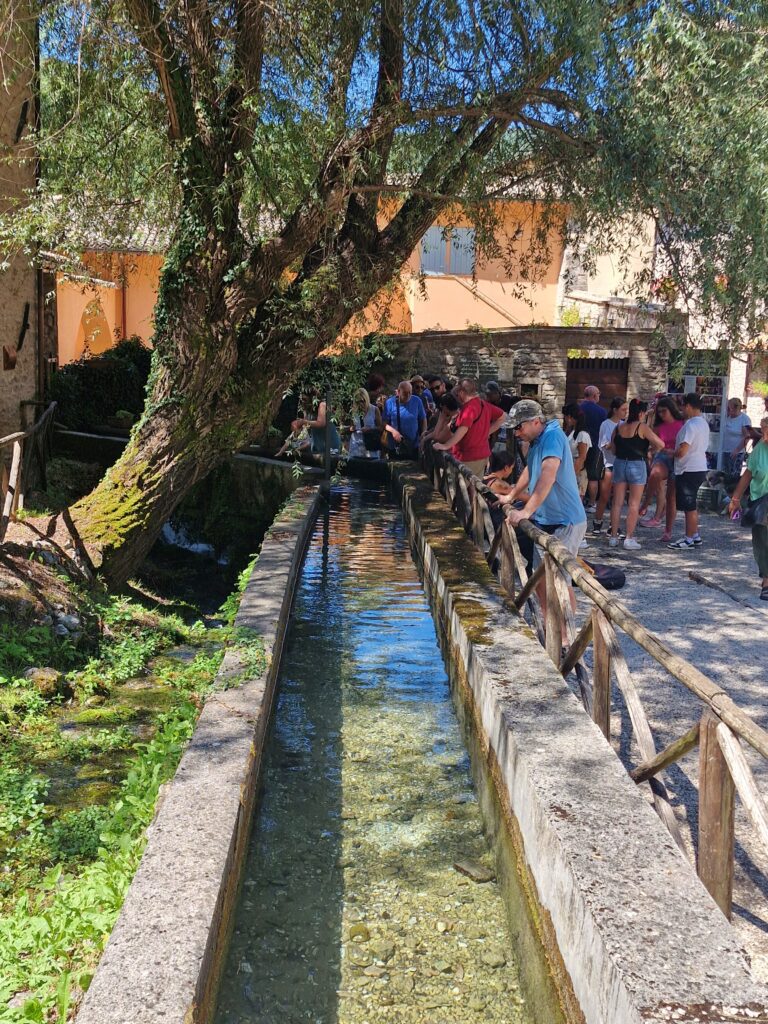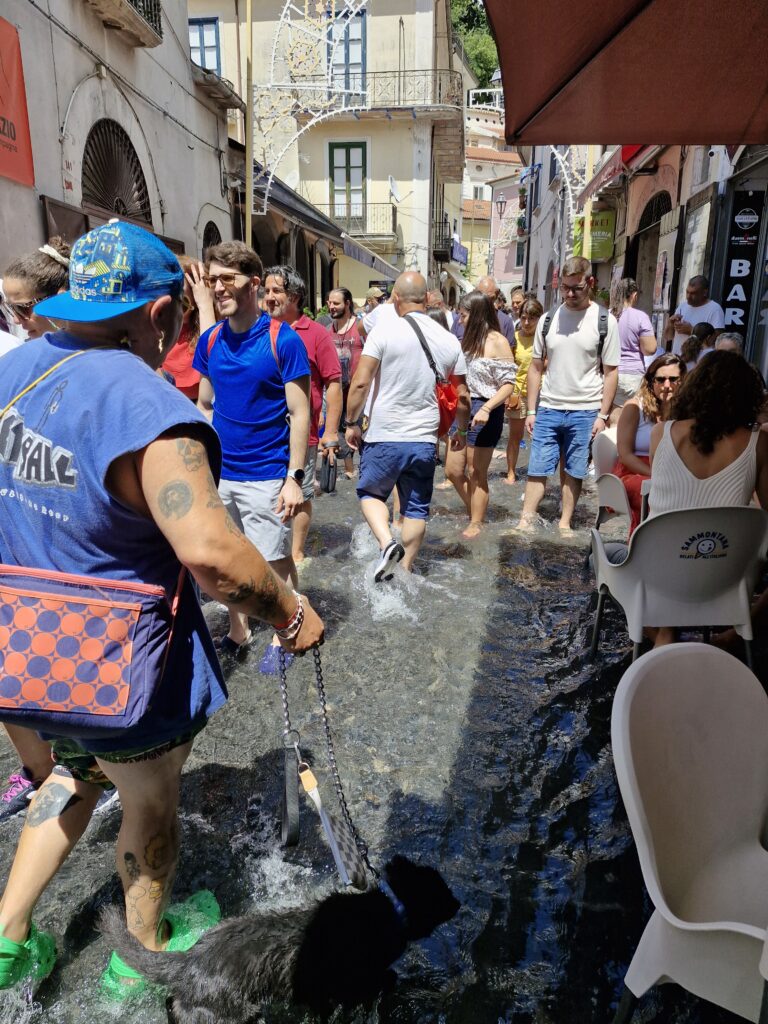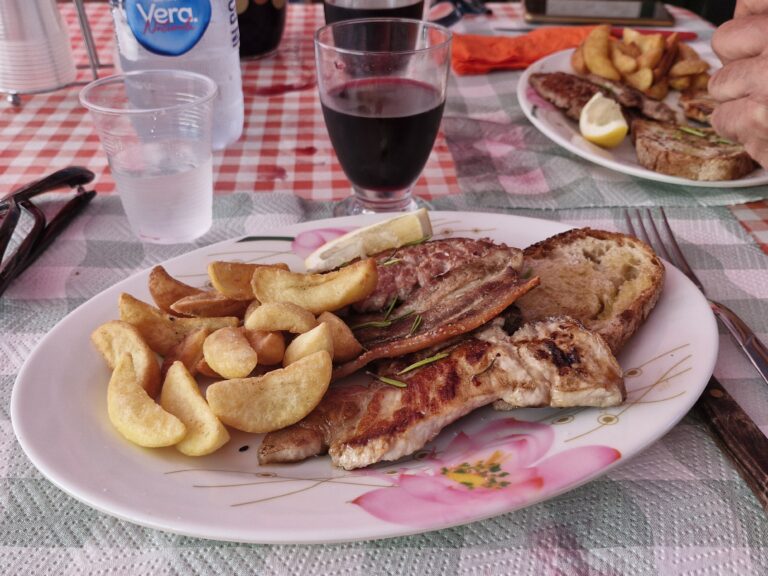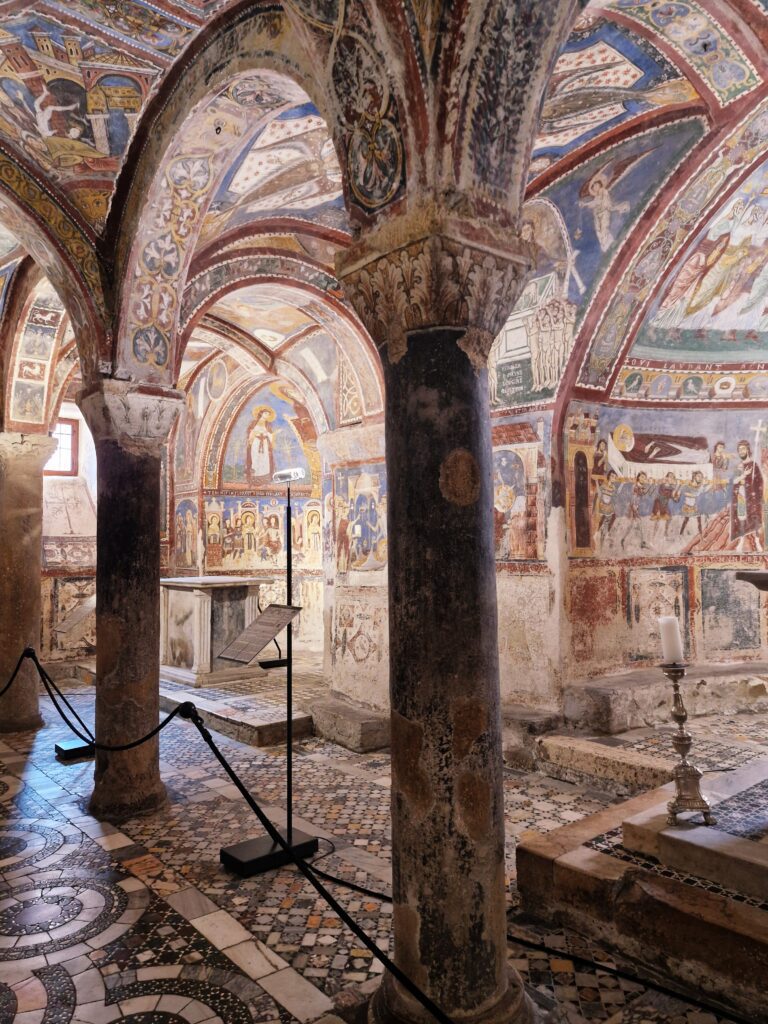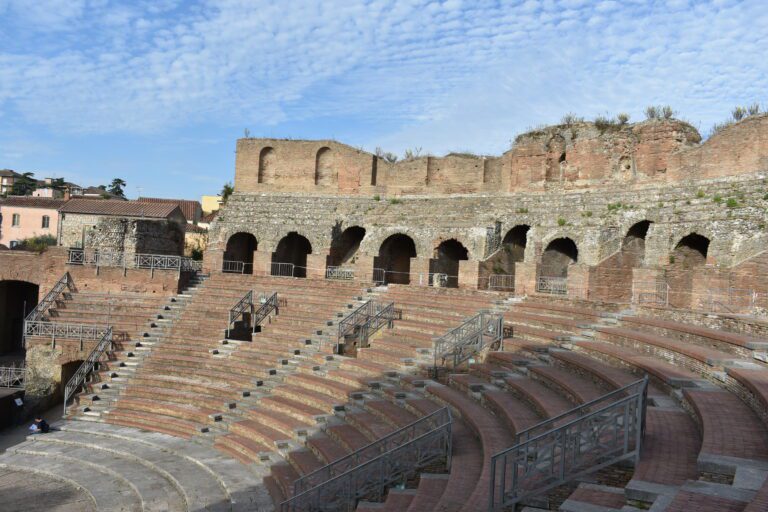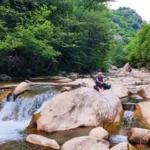4 days in Umbria are definitely not enough to see this beautiful region, but it’s still better than nothing. I think Umbria is becoming one of my favorite regions in Italy because I really enjoy so many of the things it has to offer. It’s green, which is key for me. It also has very changeable weather, which can be a nuisance, but I like rain, so I enjoyed our almost 4 days in Umbria, even if it drizzled every afternoon. Almost, because we came on Thursday afternoon and left on Sunday afternoon.
4 days in Umbria – visiting Terni
We stopped in Papingno, a small village near Terni. Since we arrived in Papingno late in the afternoon, we first did some grocery shopping because the next day was Ferragosto and all the shops were closed. Then we went exploring Terni.
My first impression of Terni wasn’t very positive; it’s a town with many ugly buildings that looked as if they were designed by drunk architects. The design is one thing, but who issued the permits for these unsightly structures remains a mystery. My second impression was still not the best, but it improved somewhat when we reached the old town.
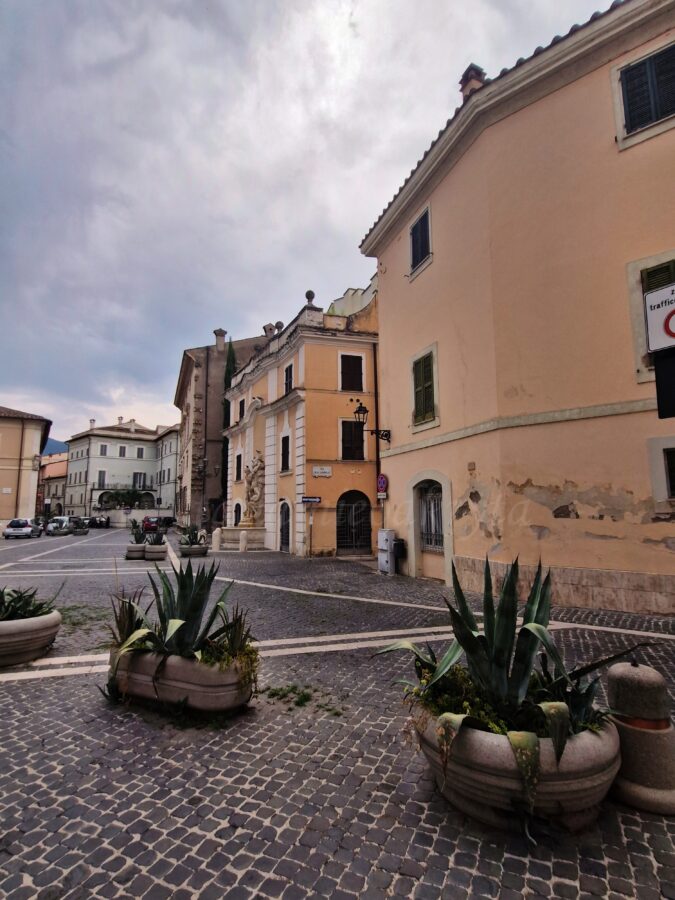
This amazes me: almost always, old towns in Italian cities, even if often very similar, are at least attractive, if not beautiful. The newer parts of cities are often full of unsightly architecture. Italians pride themselves on their design skills, but this clearly doesn’t apply to contemporary architecture. However we didn’t plan to spend our 4 days in Umbria, so Terni didn’t really bother me.
Although Terni has a long and rich industrial history (founded in the 7th century BC), I didn’t find it a particularly attractive place to visit.
Several buildings remind visitors that Terni has been Italy’s industrial center since the 19th century. Or rather, it used to be. Thanks to the Industrial Revolution and abundant water sources, the area was home to steel mills, a foundry, and factories producing weapons, jute, and wool, which provided employment for the local population for years. But the booming economy was also its curse—these important industries made the city a favorite bombing target during World War II. Many factories have already closed, and I think this is clearly visible in Terni, which looks a bit run down.
Terni has several historical monuments, such as the Roman amphitheater, which looks quite interesting but was closed, the Cathedral of Santa Maria Assunta, the Romanesque tower of the Barbara family, and the Basilica of St. Valentine. The town hall is a beautiful building, and the “Lance of Light,” better known as the Obelisk of Arnaldo Pomodoro, is also considered a must-see in Terni. It is also a modern symbol of the city.
It started raining, so we ended the first of our 4 days in Umbria by returning to Papigny.
Second day of our 4 days in Umbria
The next morning, we went to the ancient fishing village of Piediluco, beautifully situated on a lake, and spent around 4-5 hours there. This small medieval town is enlivened by colorful houses, numerous staircases and has a peaceful and charming atmosphere. It’s no wonder – the narrow, winding streets, stone houses, and charming alleys contribute greatly to this.
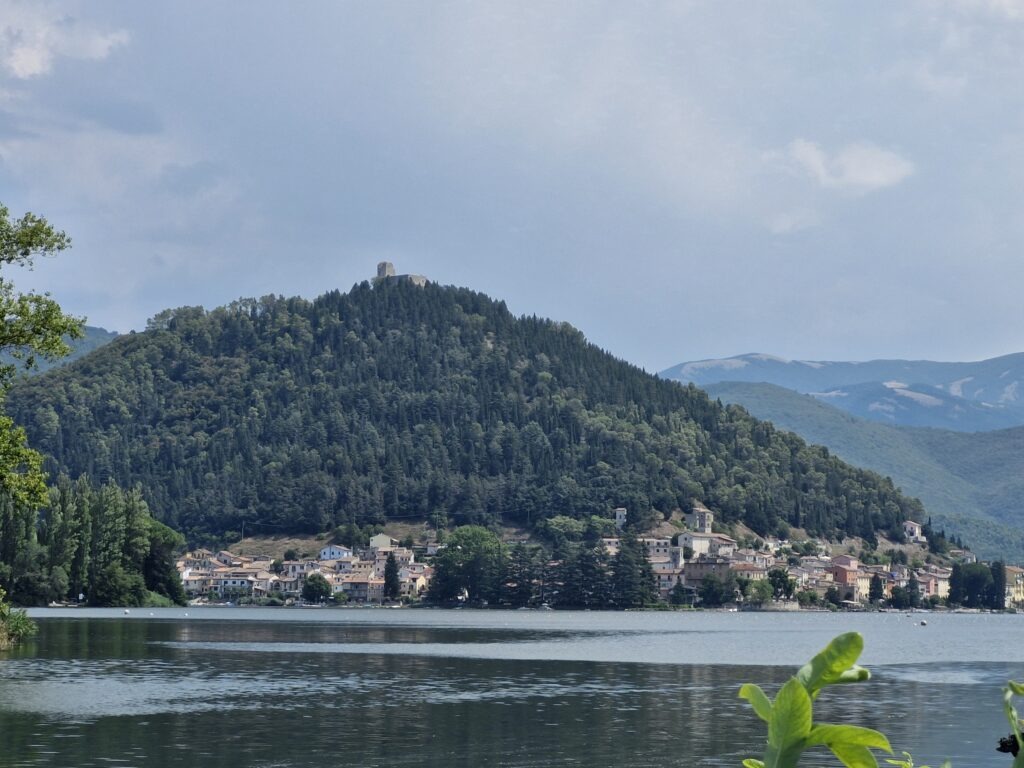
First, we went to see Rocca Albornoz in Piediluco, or rather, what’s left of it: the impressive ruins.
The ruins can be reached on foot; it takes about 45 minutes. The trail begins near the large parking lot by the lake, from where the main, flat road leads to the center of Piediluco. There’s a small sign on the mountainside indicating the trailhead. The trail is, of course, uphill, but it’s easy, without any challenging parts, but it’s better to wear comfortable shoes, preferably hiking shoes. The entire trail runs through the forest, so there’s shade and a beautiful panorama of Lake Piediluco.
From the top, the view from the ruins is quite pleasing to the eye: a lake with a peculiar shape, nestled among green hills and valleys, creating a beautiful landscape. The mountain rising on the opposite side of town is Caperno. Locals call it “Echo Mountain” because, they say, it echoes when shouted at.
At one point, the path to the tower forks at a crossroads, and another path leads into the town; while descending we chose it. The path led us to the lakeshore rather than the village center; so to reach, for example, the medieval Church of San Francesco, the town’s most important building, you have to descend numerous steps leading between narrow streets and pretty houses.
We had a pleasant walk along the lake, and for the first time in my life, I witnessed a tanker truck drawing water from the lake because of a fire nearby.
Piediluco is a charming, slow-paced place, so if you’re in the area, be sure to visit it, even if you have only 4 days in Umbria.
Visiting Arrone
Have I already mentioned that in every single afternoon during 4 days in Umbria the weather deteriorated? It was still warm though, so we decided to check out Arrone. I always feel that if places like Arrone were in Tuscany, they would be full of foreign tourists. On the other hand, as Mauro says, Tuscan towns offer everything Umbria has to offer, and more. Perhaps he’s right, but I liked Arrone.,
Arrone’s origins date back to the 2nd century BC; after the reigns of many rulers, the village was abandoned. At the end of the 10th century, the noble Roman Arroni family settled here, building a castle and forming the nucleus of the town that took their name. Over the centuries, the village was repeatedly invaded until, finally, in 1860, it became part of the Kingdom of Italy.
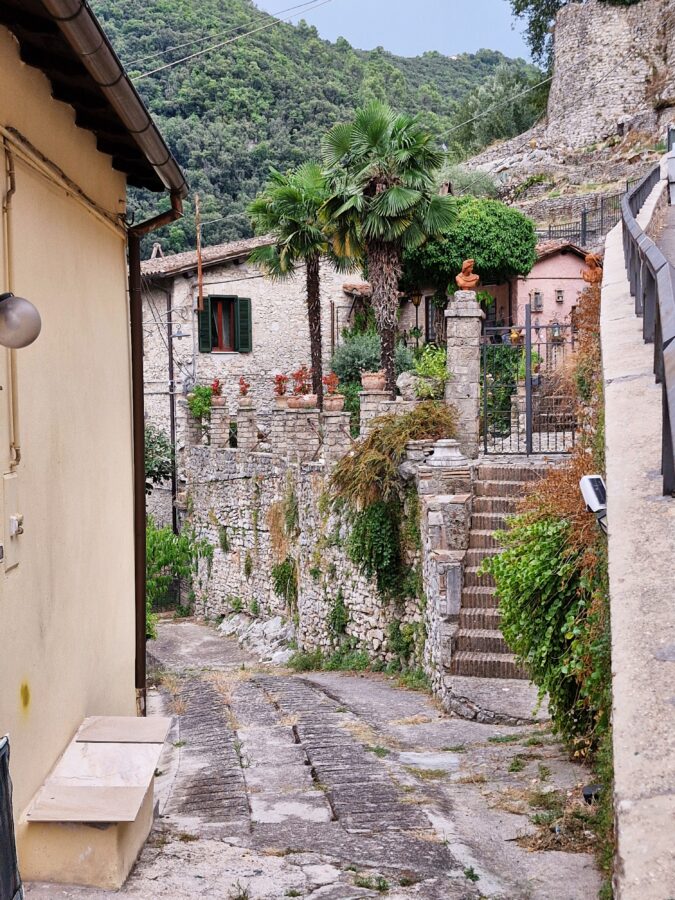
Arrone stands on a rocky cliff surrounded by forests and water. It’s listed as one of the most beautiful Borgi in Italy and was recently recognized as one of the “Flowering Cities” thanks to the residents’ care in decorating their balconies, windows, and alleys with flowers and plants. I actually don’t remember many decorated balconies, but yes, there were quite a lot of places where the residents truly cared for their surroundings. I think it was the most flowery places I saw during 4 days in Umbria.
“La Terra” is the oldest and highest part of the town, which has preserved the almost intact structure of a medieval fortress.
In Arrone, you can see the remains of Arroni Castle, the village’s symbol – the Municipal Tower, also known as the “Tower of the Olive Tree,” the town bell tower, and the small and beautiful church of San Giovanni Battista with frescoes. Nearby is also the medieval San Giovanni Gate.
The borgo is small, charming, and unfortunately rather desolate. And as I mentioned above – if it were any other part of Italy, it would be packed.
On the way back to Piediluco, we spotted a waterfall from the road. We were truly amazed. We stopped at the fence near the waterfall just to see where we could park on Sunday, as we had planned to see the waterfall that day. By chance, we came across the interesting old bridge – Ponte del Toro, built by the Romans, and a beautiful river.
And so ended our first two days of our 4 in Umbria.

